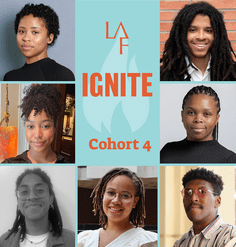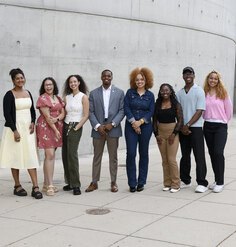Olmsted Scholar Feature: Schoolyard Reform as Urban Greening
By Kate Tooke, 2011 National Olmsted Scholar
Nationwide approximately one-third of all school-age children attend urban public schools. For the most part, the campuses of these schools mirror their surrounding city environments: high-density neighborhoods mean that schools serving large student bodies have been built on small lots where outdoor space is tight and pavement is plentiful. In an era where education reform, public health, and environmental issues are all frequent topics of public debate, these small urban schoolyards have come into focus as places of great potential. They are natural community centers where we can not only encourage active recreation but also create diverse educational landscapes that foster future environmental stewards and contribute to the ecological health of the surrounding city. Across the country and worldwide grassroots groups are slowly transforming urban schoolyards into playgrounds, parks, edible landscapes and outdoor classrooms with widely variant benefits for children, communities and the environment.
My master's thesis research sought to understand the ways in which schoolyard reform movements contribute to urban greening efforts as well as how renovated schoolyards engage urban youth with urban ecology. As a former Boston public school teacher, I chose to focus my study on the Boston Schoolyards Initiative (BSI), which has renovated 78 public schoolyards in the city since 1995. I examined 12 elementary schoolyards in depth, comparing pervious surfaces and canopy covers before and after renovations as well as diagramming and quantifying how vegetated spaces overlap with areas for play and learning in the new schoolyards.
The results indicated some valuable increase in canopy cover (after 30 years of projected growth) as a result of BSI renovations, but little to no impact on the amount of pervious surfacing on school sites. In other words, most renovations in the sample group included some tree plantings, but paved areas generally remained paved. In addition, I found that although play and learning space accounts for over 50% (average) of renovated schoolyards, less than 8% of this play and learning space generally overlaps with ecologically-rich vegetated areas (usually a well-designed but fenced outdoor classroom). I divided the schoolyards into 5 typologies based on their quantities and configurations of play versus vegetated space, and my thesis ultimately recommended one schoolyard typology upon which to model future renovations (see figures).
Informal interviews with BSI staff, schoolyard designers and school personnel revealed concerns about maintenance, vandalism and safety as the primary reasons that more vegetated and sustainable features were not included in most renovations. My thesis identified a pressing need for a culture of small, safe-to-fail experiments as a way to begin addressing these commonly-faced challenges.
As the 2011 National Olmsted Scholar I plan to develop a design toolkit focused on making ecosystem services transparent, educational and sustainable features of urban schoolyards. I will travel to research successful features at targeted schools around the nation as well as engage school communities and schoolyard designers in dialogue about what systems could work. The research will form the basis for practical, replicable plans of small experiments which can be implemented during renovations and monitored by students as part of an integrated academic curriculum. Please stay tuned to this blog series for updates on my research and the developing toolkit.
Kate graduated from the University of Massachusetts, Amherst in May with a Masters in Landscape Architecture. She works at Dodson Associates in Ashfield, MA and is currently engaged in designing an outdoor classroom and natural playscape for a new public elementary school in the city of Westfield, MA.










